Tanaka Kazuyuki Hamono
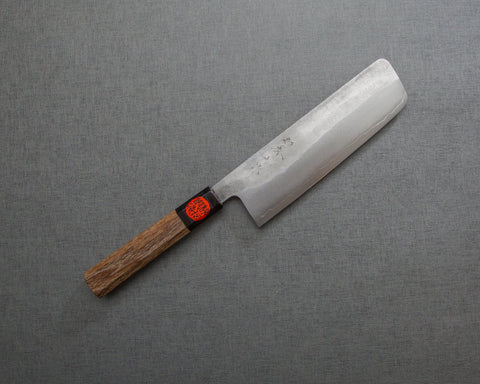
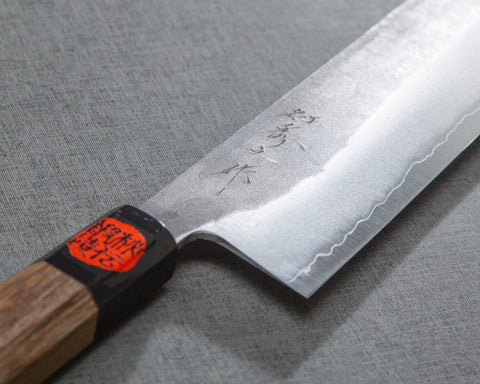
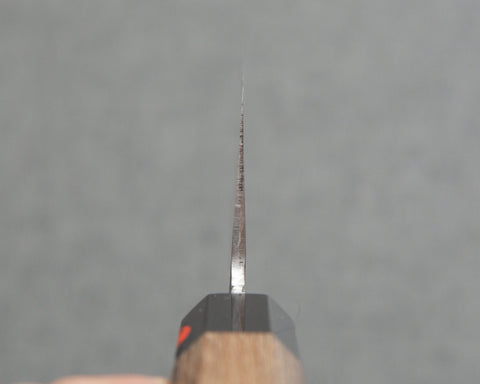
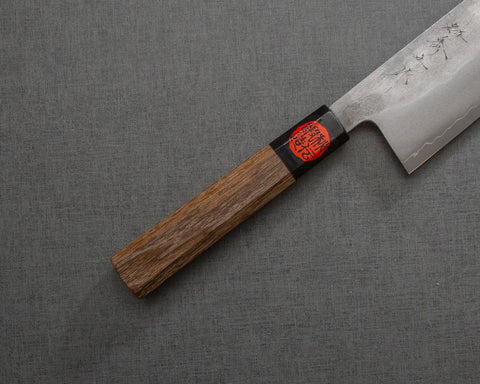
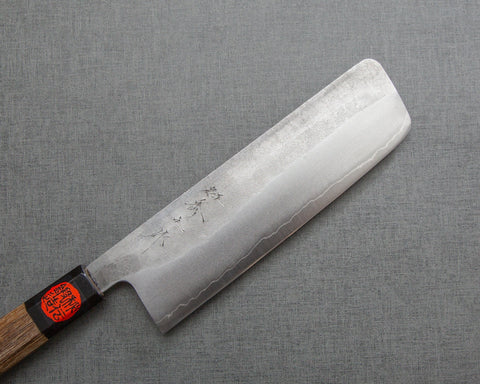
Shigeki Tanaka Ginsan (Silver #3) Nashiji 165mm Nakiri
目前沒有提供取貨服務
這款 Tanaka Nakiri 是由Shigeki Tanaka 大師以 Ginsan(銀#3)不銹鋼碳鋼為核心,以不銹鋼包覆而成,具有美麗的 Kasumi 線條和美觀的 Nashiji 飾面。美麗的邊緣幾何形狀確保了非常平滑的切割性能,帶有水牛角kuchiwa的雞翅木八角形手柄確保了更平衡的操作體驗。
規格:
- 產地(產地):日本兵庫縣三木市
- 品牌: 田中 和之 羽物
- 工匠:田中茂樹
- 刀類型:Nakiri
- 刀刃
- 建築:聖邁
- 研磨:雙刃刀片(50/50研磨)
- Hagane(核心鋼):Ginsan(銀#3)
- Jigane(覆層):不鏽鋼
- 硬度:60-61HRC
- 手工鍛造、手工打磨、手工打磨
- 刀片表面處理:
- 納西吉
- 霞波蘭語
- 刀刃長度:165 公釐(6.5 吋)
- 刀片高度(跟部):50mm
- 書脊厚度
- 鞋跟上方:2.6mm
- 中:2.4毫米
- 處理
- 形狀:八角形(八角形)
- 材質:柚木
- 口:黑水牛角
- 長度:128毫米
- 總長度:310mm
- 重量:147公克(5.19盎司)
- 手工鑿痕:日文漢字“名匠秀之作”
關於田中一幸 Hamono 田中一之刃物
田中的刀片製作始於明治末期的 1904 年,在日俄戰爭期間製作鐮刀。 1946年,田中工坊開始專注於菜刀,2000年隨著第三代田中一之即位,家族企業更名為「田中和之濱野」並一直沿用此名稱自從。 Kazuyuki 的兒子- 第四代鐵匠田中誠貴(Shigeki Tanaka) - 於1994 年開始與父親一起製作刀具。 。
關心:
Ginsan (Gin3 或 Silver #3)是不銹鋼碳鋼,添加了 14% 的鉻。 Ginsan 保留了日本碳鋼的特性,硬度與 Shirogami #2 相似,是不銹鋼的。它的刀片保持力僅略遜於Shirogami #2,但事實上,它結合了易於磨刀、碳鋼特性以及不銹鋼特性,使其成為那些希望擁有一把易於維護的日本碳鋼刀的人的絕佳選擇。
切割面:
建議的切割表面:木材、橡膠板和高端複合材料以及優質塑膠(例如聚乙烯)可以構成可接受的切割表面,並有助於保護和延長刀片。避免使用玻璃、金屬、檯面和其他堅硬、不平整的表面。
銳化:
我們建議在磨刀石上磨利所有優質日本刀,因為我們相信它們可以為您的刀具帶來最佳效果。
The combination of extreme edge thinness combined with the extra blade weight gives this knife an extremely satisfying cutting experience.
I work in a professional kitchen and after multiple hours of straight use I have no complaints about the fit and finish.
Great knife out the box came with a burr so most likely sharpened prior to shipping. No chips . The knife isn’t completely flat there is an angle at approximately 2/3 the length of the knife which can be altered with light work as aforementioned in other reviews. I’ve kept the angle as is to allow for low rocking veggies .
This is NOT a meat knife even though some people demonstrate cutting small fillets due to sharpness. Veggies only and fruit. This isn’t a true carbon steel so you’ll get away with acidic items.
Maintenance is the best part of ginsan because it acts like a carbon steel in sharpness but can be maintained as a stainless. I’m lazy and will mainly sharpen my knife as necessary but I don’t wipe between cuts. I will only do that with a Deba which are hard to find in Ginsan. Nakiri can get expensive so this was the right price point for me without going over budget.
I would say for a beginner nothing more than $200 with tax and shipping . Once you’re used to a few years of blade maintaining then opt for shirogami which isn’t as meticulous as aogami. Also for veggies your blade needn’t be razor sharp as for cutting meat unless you’re doing designs then opt for an usuba.


